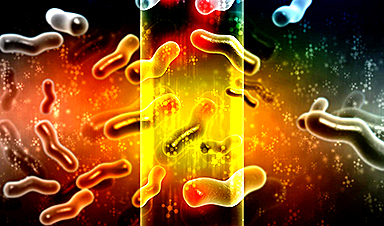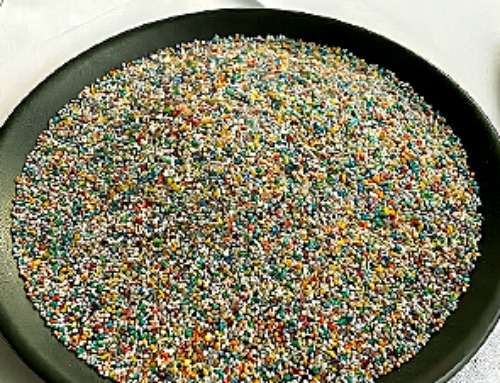A study from TUM demonstrates a promising therapeutic approach.
Researchers at the Technical University of Munich (TUM) have made promising advances in preventing Alzheimer's by developing a new therapeutic strategy. Their approach focuses on targeting the amyloid beta biomolecule, known to cause the early-stage hyperactivity of nerve cells characteristic of the disease.
The team led by Dr. Benedikt Zott and Prof. Arthur Konnerth from the TUM School of Medicine and Health and Prof. Arne Skerra from the TUM School of Life Sciences succeeded in developing and using a protein drug that can suppress the effects of the harmful molecule.
The results obtained on mice in the laboratory indicate that neuronal dysfunctions could even be repaired. The study was published in the renowned journal Nature Communications. The researchers hope that the protein they investigated, which experts refer to as amyloid-beta-binding anticalin (H1GA), can halt the progression of the serious neurodegenerative disease at an early stage.
Alzheimer's Disease: A Growing Global Health Crisis
According to experts, there are an estimated 55 million people worldwide living with dementia, most of them suffering from Alzheimer's. Each year, around 10 million new cases are diagnosed. There is currently no medication to combat the basic mechanisms of the disease. Only symptoms such as declining mental performance can be treated.
Dr. Benedikt Zott emphasizes: "We are still a long way from a therapy that can be used in humans, but the results in animal experiments are very encouraging. The effect of completely suppressing neuronal hyperactivity in the early stages of the disease is particularly remarkable."
The Development and Testing of H1GA
The researchers obtained the anticalin H1GA by protein design and produced it in genetically modified bacteria of the species Escherichia coli. The active ingredient was injected directly into the hippocampus region of the brain. The previously hyperactive brain cells could then no longer be distinguished from healthy nerve cells in terms of measurable behavior.
It is still unclear whether the effect can actually be achieved in human patients outside the laboratory. In any case, a more effective form of administration of the active ingredient is currently being developed. In 2016, the active substance solanezumab, which was supposed to have a similar effect, proved to be a failure in large-scale clinical trials, but this can be explained by its different molecular structure. Zott and his colleagues also compared their new active ingredient directly with solanezumab in the trials. H1GA showed clearer positive effects.
Reference: "β-amyloid monomer scavenging by an anticalin protein prevents neuronal hyperactivity in mouse models of Alzheimer's Disease" by Benedikt Zott, Lea Nästle, Christine Grienberger, Felix Unger, Manuel M. Knauer, Christian Wolf, Aylin Keskin-Dargin, Anna Feuerbach, Marc Aurel Busche, Arne Skerra and Arthur Konnerth, 10 July 2024, Nature Communications.
DOI: 10.1038/s41467-024-50153-y
News
Lower doses of immunotherapy for skin cancer give better results, study suggests
According to a new study, lower doses of approved immunotherapy for malignant melanoma can give better results against tumors, while reducing side effects. This is reported by researchers at Karolinska Institutet in the Journal of the National [...]
Researchers highlight five pathways through which microplastics can harm the brain
Microplastics could be fueling neurodegenerative diseases like Alzheimer's and Parkinson's, with a new study highlighting five ways microplastics can trigger inflammation and damage in the brain. More than 57 million people live with dementia, [...]
Tiny Metal Nanodots Obliterate Cancer Cells While Largely Sparing Healthy Tissue
Scientists have developed tiny metal-oxide particles that push cancer cells past their stress limits while sparing healthy tissue. An international team led by RMIT University has developed tiny particles called nanodots, crafted from a metallic compound, [...]
Gold Nanoclusters Could Supercharge Quantum Computers
Researchers found that gold “super atoms” can behave like the atoms in top-tier quantum systems—only far easier to scale. These tiny clusters can be customized at the molecular level, offering a powerful, tunable foundation [...]
A single shot of HPV vaccine may be enough to fight cervical cancer, study finds
WASHINGTON -- A single HPV vaccination appears just as effective as two doses at preventing the viral infection that causes cervical cancer, researchers reported Wednesday. HPV, or human papillomavirus, is very common and spread [...]
New technique overcomes technological barrier in 3D brain imaging
Scientists at the Swiss Light Source SLS have succeeded in mapping a piece of brain tissue in 3D at unprecedented resolution using X-rays, non-destructively. The breakthrough overcomes a long-standing technological barrier that had limited [...]
Scientists Uncover Hidden Blood Pattern in Long COVID
Researchers found persistent microclot and NET structures in Long COVID blood that may explain long-lasting symptoms. Researchers examining Long COVID have identified a structural connection between circulating microclots and neutrophil extracellular traps (NETs). The [...]
This Cellular Trick Helps Cancer Spread, but Could Also Stop It
Groups of normal cbiells can sense far into their surroundings, helping explain cancer cell migration. Understanding this ability could lead to new ways to limit tumor spread. The tale of the princess and the [...]
New mRNA therapy targets drug-resistant pneumonia
Bacteria that multiply on surfaces are a major headache in health care when they gain a foothold on, for example, implants or in catheters. Researchers at Chalmers University of Technology in Sweden have found [...]
Current Heart Health Guidelines Are Failing To Catch a Deadly Genetic Killer
New research reveals that standard screening misses most people with a common inherited cholesterol disorder. A Mayo Clinic study reports that current genetic screening guidelines overlook most people who have familial hypercholesterolemia, an inherited disorder that [...]
Scientists Identify the Evolutionary “Purpose” of Consciousness
Summary: Researchers at Ruhr University Bochum explore why consciousness evolved and why different species developed it in distinct ways. By comparing humans with birds, they show that complex awareness may arise through different neural architectures yet [...]
Novel mRNA therapy curbs antibiotic-resistant infections in preclinical lung models
Researchers at the Icahn School of Medicine at Mount Sinai and collaborators have reported early success with a novel mRNA-based therapy designed to combat antibiotic-resistant bacteria. The findings, published in Nature Biotechnology, show that in [...]
New skin-permeable polymer delivers insulin without needles
A breakthrough zwitterionic polymer slips through the skin’s toughest barriers, carrying insulin deep into tissue and normalizing blood sugar, offering patients a painless alternative to daily injections. A recent study published in the journal Nature examines [...]
Multifunctional Nanogels: A Breakthrough in Antibacterial Strategies
Antibiotic resistance is a growing concern - from human health to crop survival. A new study successfully uses nanogels to target and almost entirely inhibit the bacteria P. Aeruginosa. Recently published in Angewandte Chemie, the study [...]
Nanoflowers rejuvenate old and damaged human cells by replacing their mitochondria
Biomedical researchers at Texas A&M University may have discovered a way to stop or even reverse the decline of cellular energy production—a finding that could have revolutionary effects across medicine. Dr. Akhilesh K. Gaharwar [...]
The Stunning New Push to Protect the Invisible 99% of Life
Scientists worldwide have joined forces to build the first-ever roadmap for conserving Earth’s vast invisible majority—microbes. Their new IUCN Specialist Group reframes conservation by elevating microbial life to the same urgency as plants and [...]





















